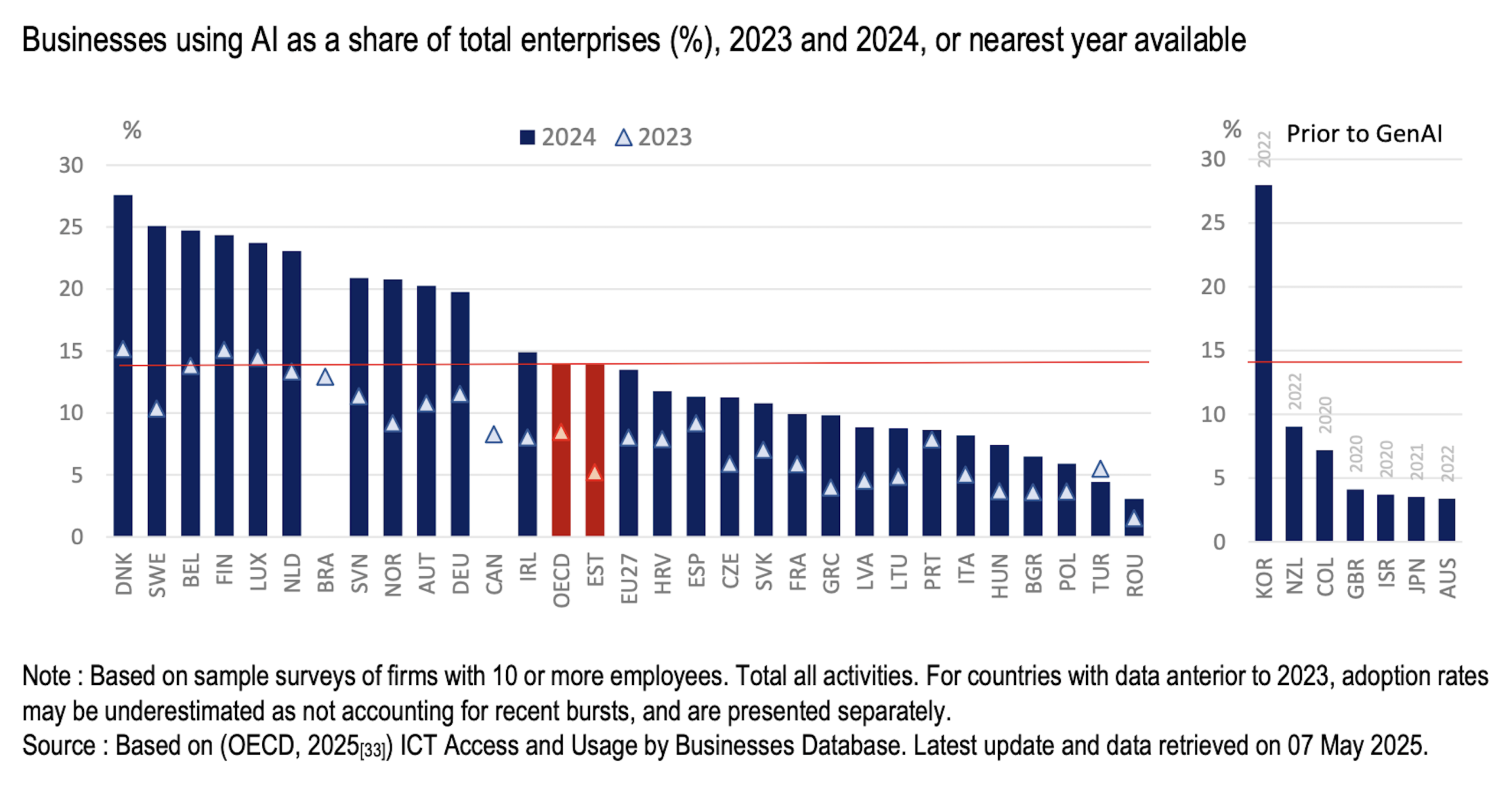Artificial Intelligence at Two Speeds in the Same Economy
The use of these tools grew by 4.65% over the past year, but adoption remains far higher among large companies than the rest. The new OECD report, Early divides in the transition to artificial intelligence, warns of the impact on competitiveness.
AI adoption rates almost doubled in some countries over 2024

Uneven growth in adoption rates
AI adoption rates nearly doubled in some countries during 2024. OECD data confirm that the use of Artificial Intelligence accelerated sharply between 2023 and 2024, especially after the rise of generative AI. In countries such as Denmark, Sweden, and Belgium, more than 25% of companies already use these tools, while the OECD average is around 14%.
National statistics reinforce this trend:
- In Canada, AI usage rose from 6.1% to 10.6% in just one quarter.
- In the United Kingdom, the share of companies applying it is expected to more than double, from 9% to 22%.
- In the United States, more than 10% of firms plan to implement AI in the coming months.
The momentum is clear—but so are the differences between countries and company sizes.
Large companies take the lead
However, 91% of SMEs that have adopted AI report productivity gains, and 76% say it has enhanced their innovative capacity. Those led by younger executives are the most likely to integrate these technologies.
Employment: new changes and opportunities
Barriers and policies for an inclusive transition
The OECD recommends strengthening local capacities, boosting digital training, and promoting regional innovation ecosystems to prevent current divides from becoming structural.
